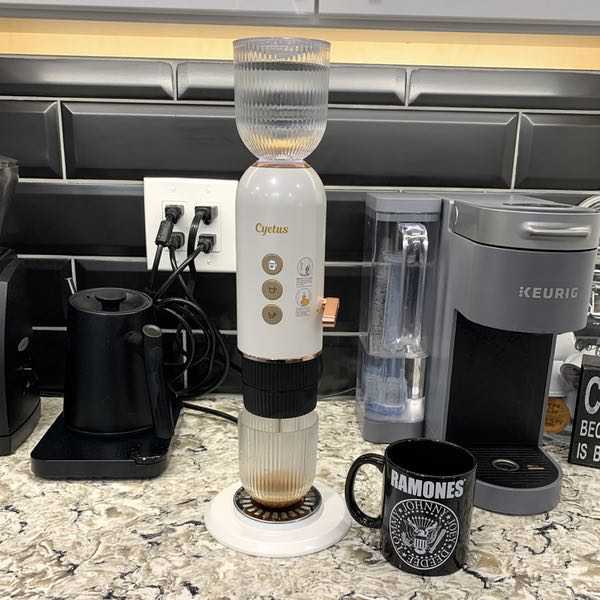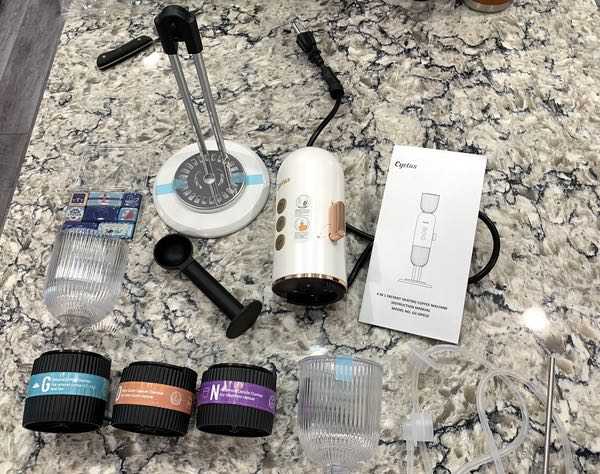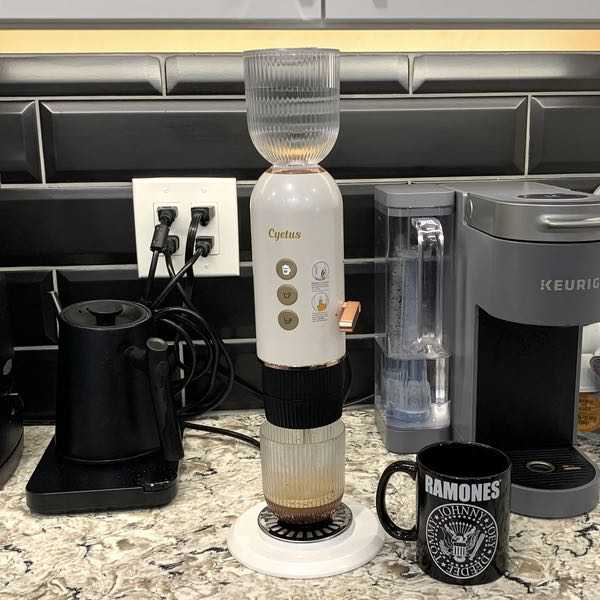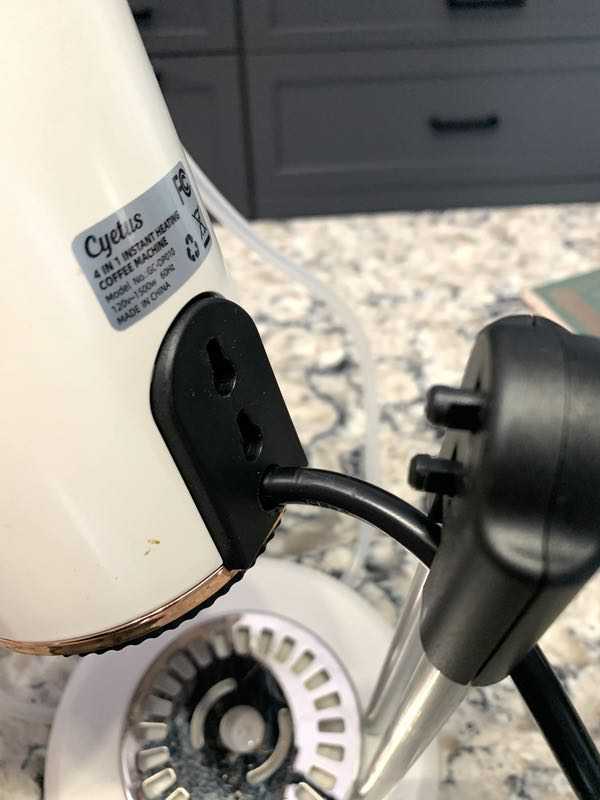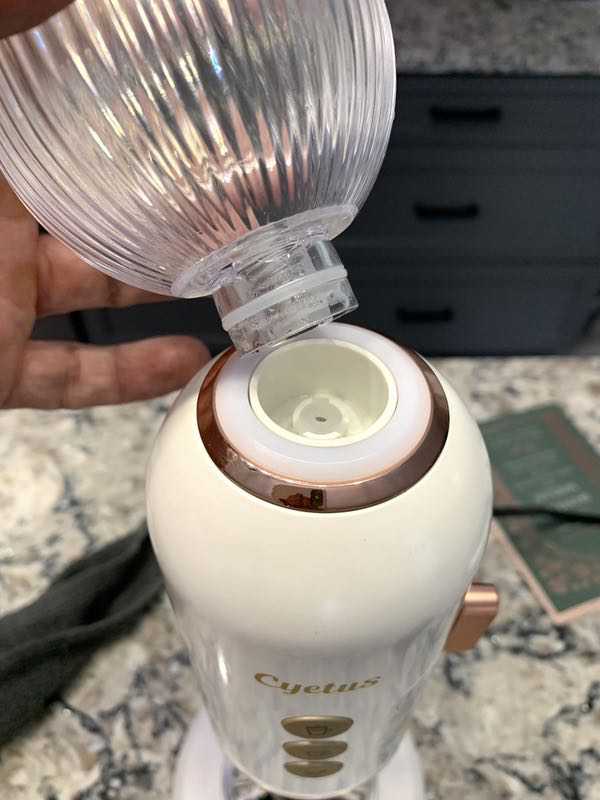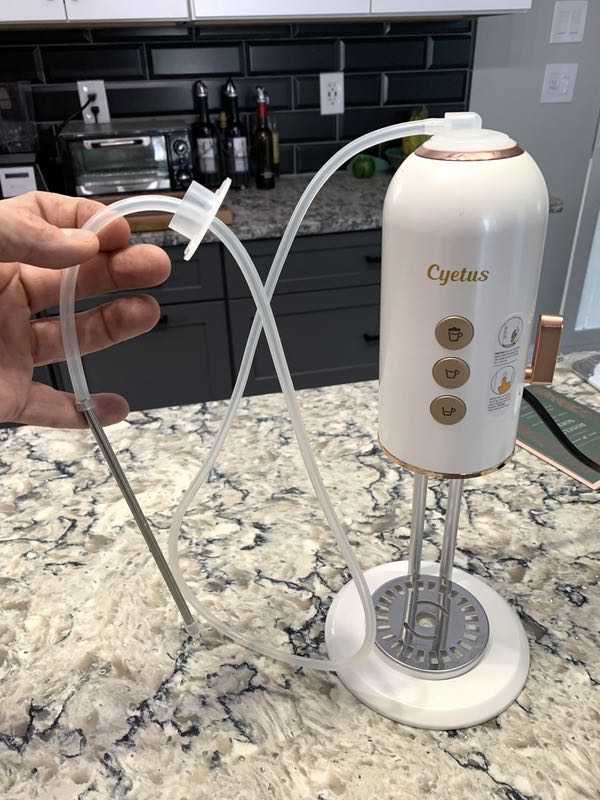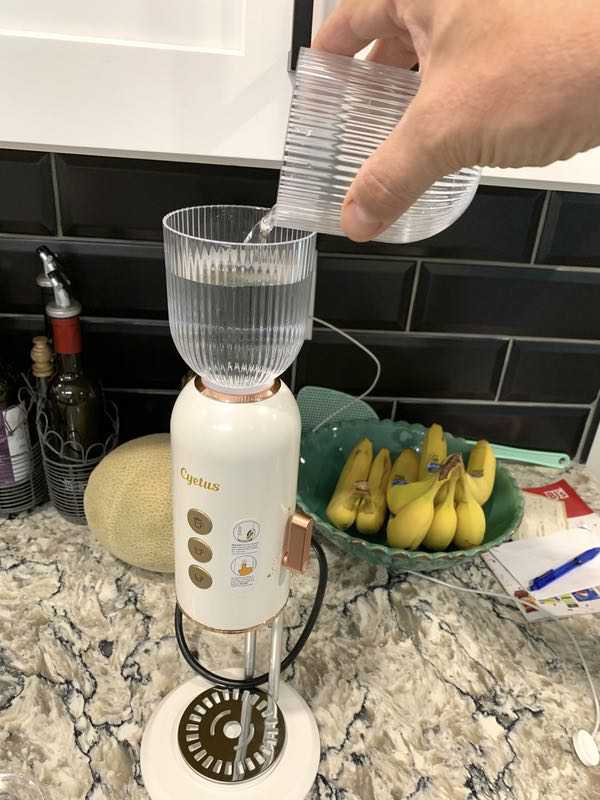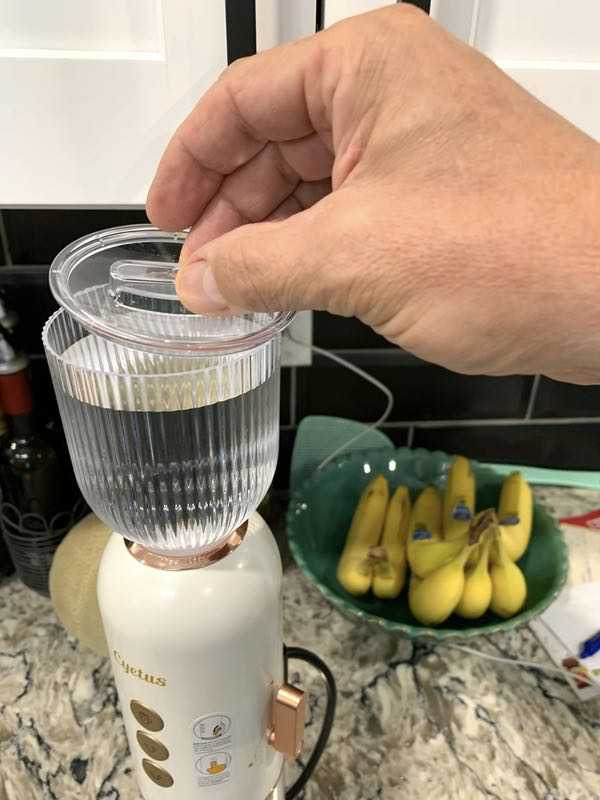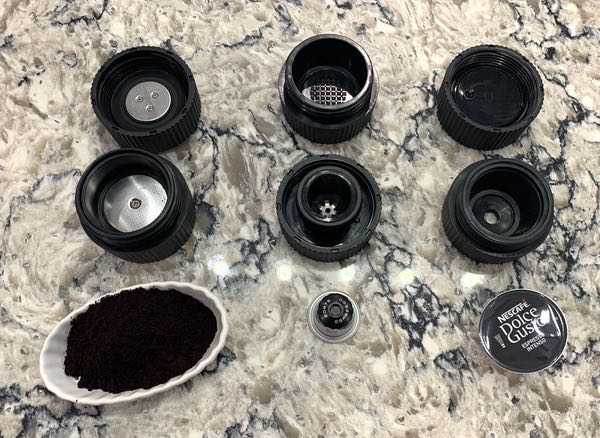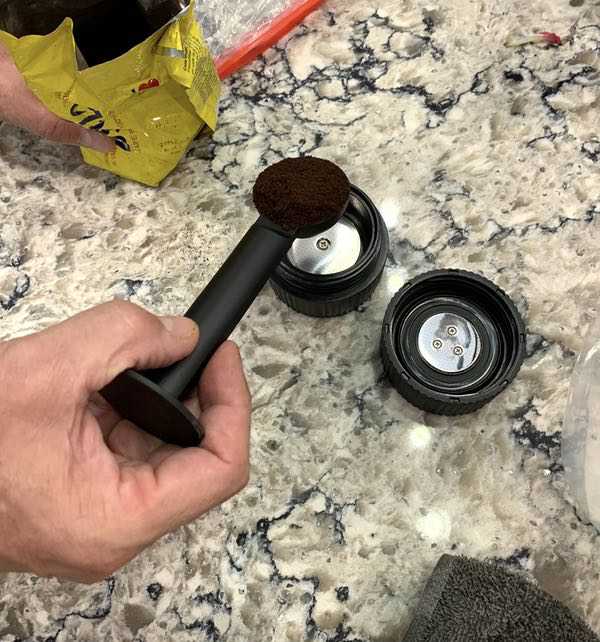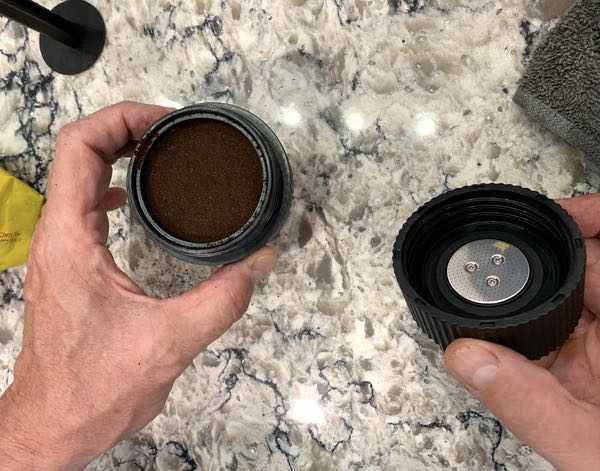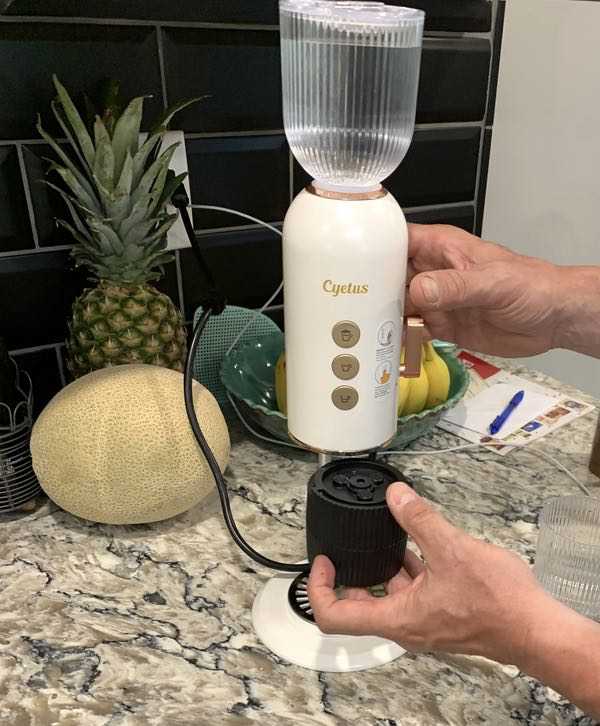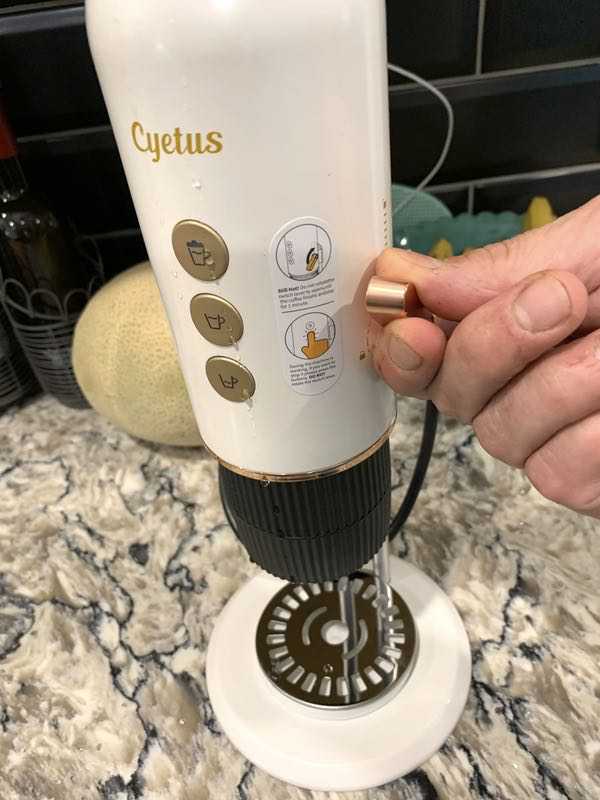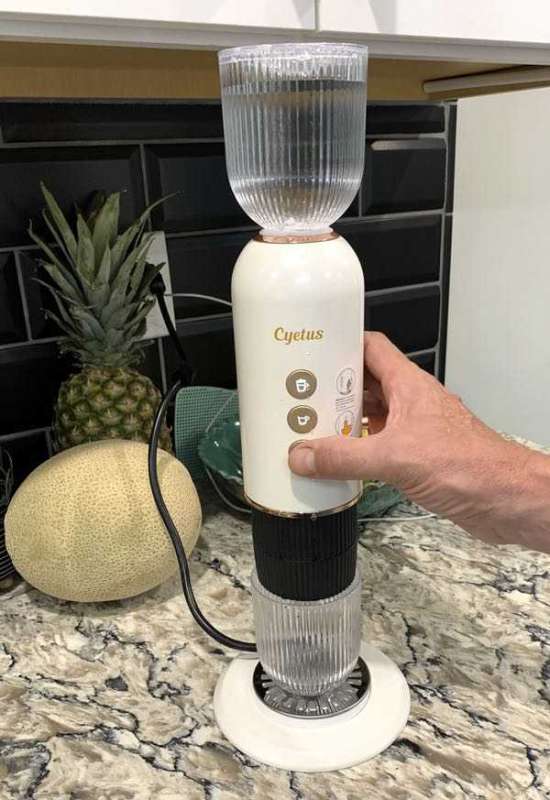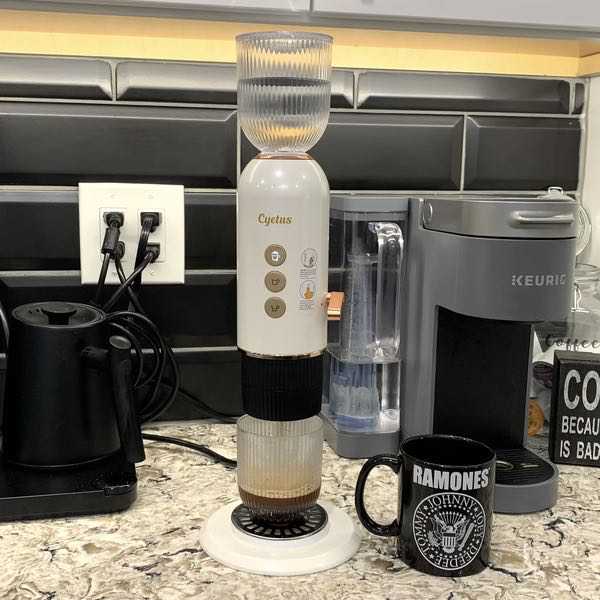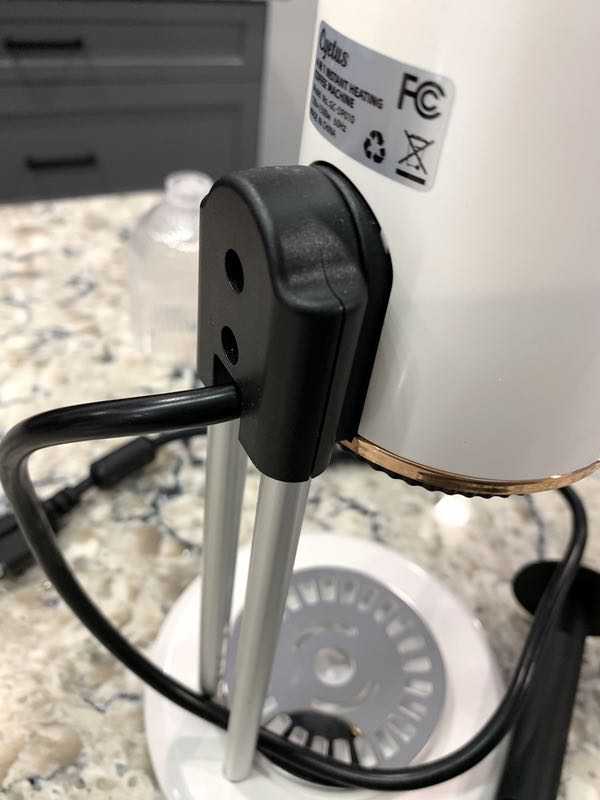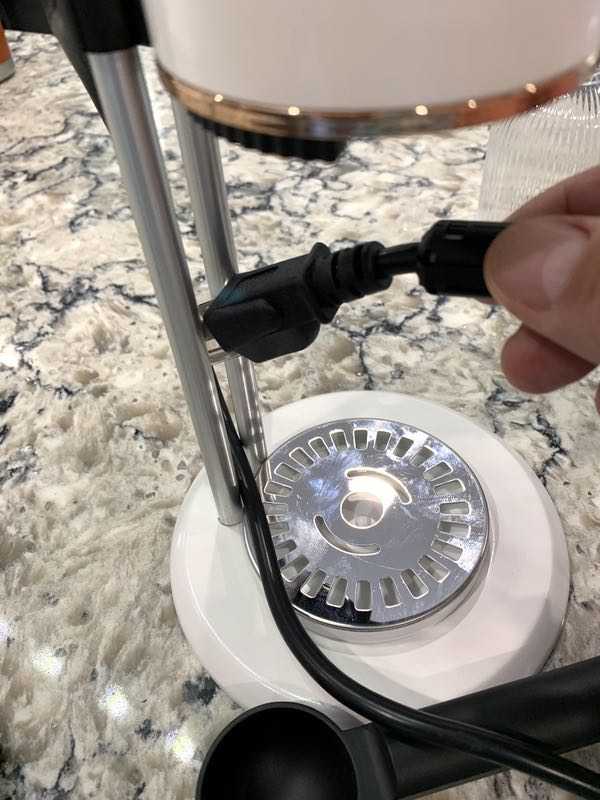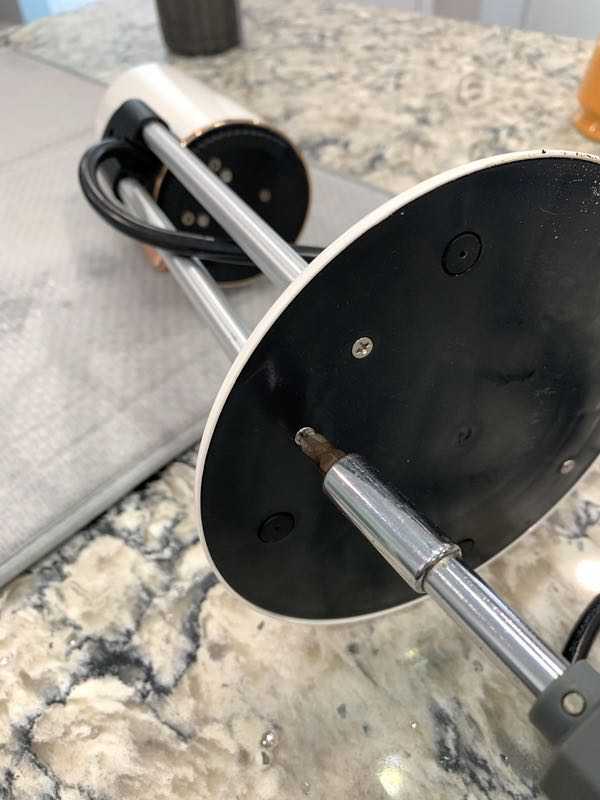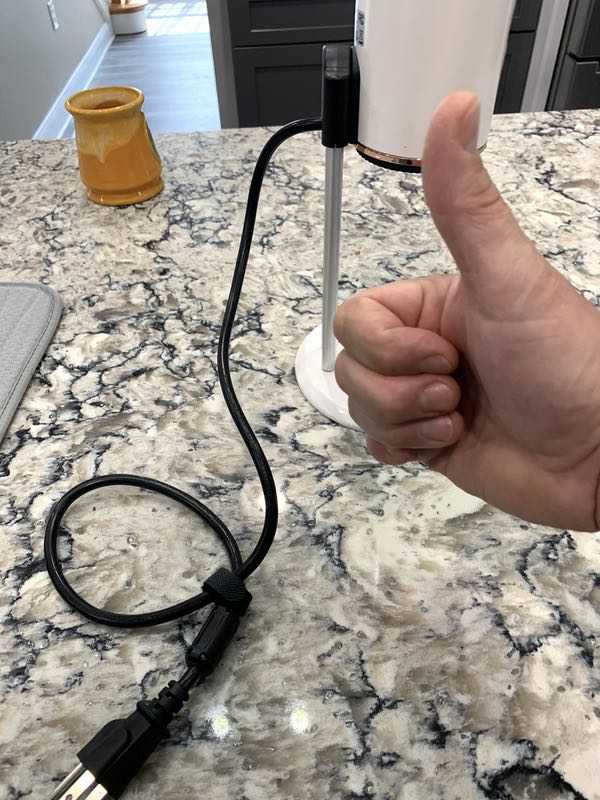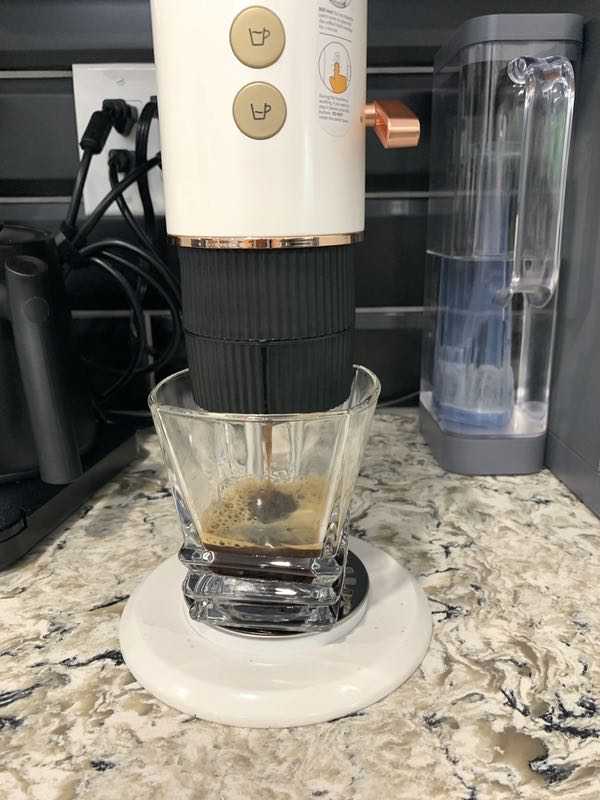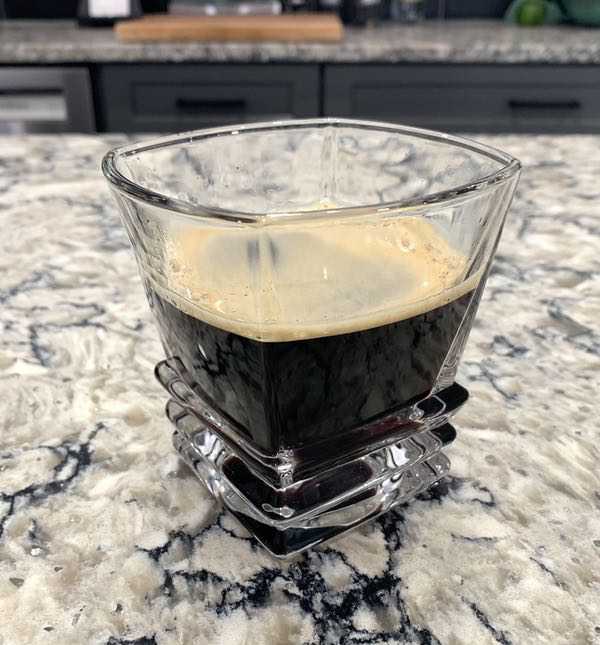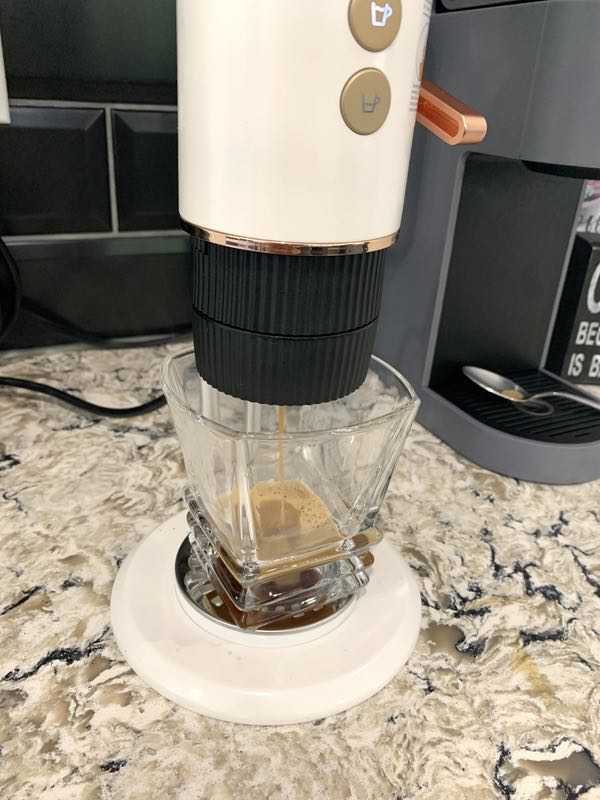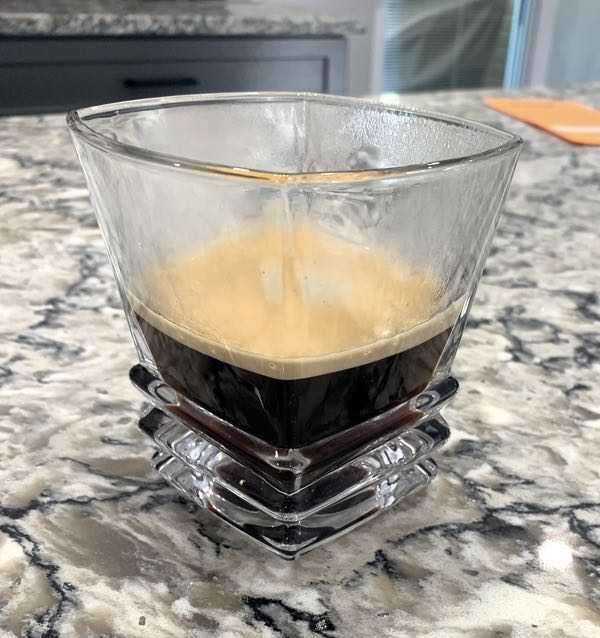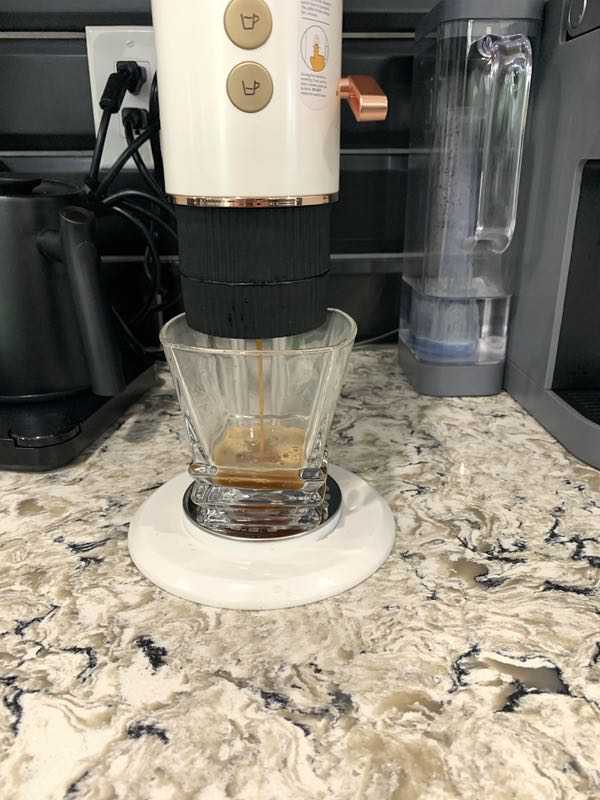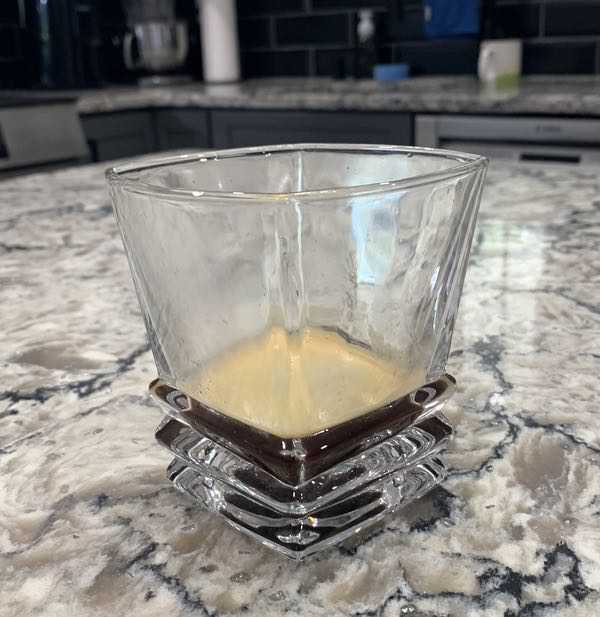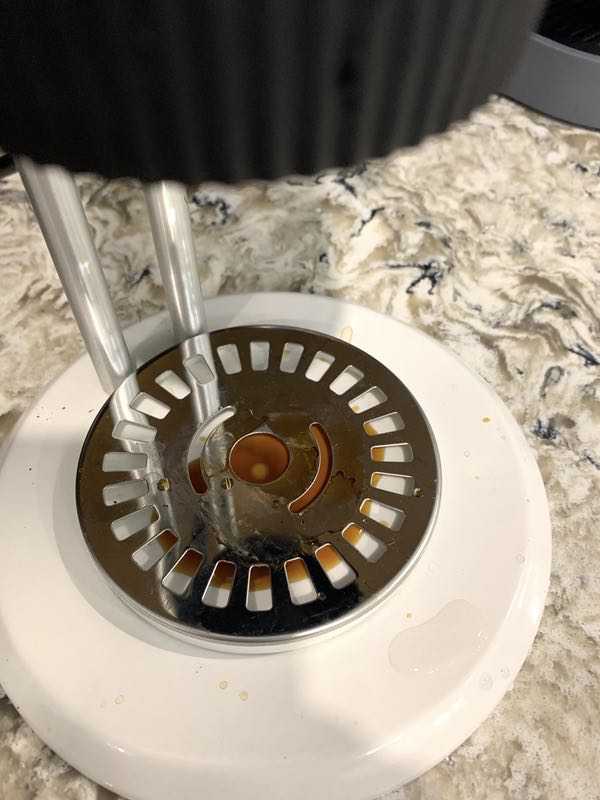REVIEW – Pardon my shaky hands… I have the caffeine jitters after a month of testing the Cyetus Mini Espresso Maker! This device delivers coffee crazy fast in multiple cup sizes from multiple coffee sources. Got grounds? Got Nespresso pods? Got Dulce Gusto pods? Get in here. I gotchu. To the review!
What is it?
The Cyetus Mini Espresso Maker is a fast-brewing coffee maker that you can use with Nespresso pods, Dolce Gusto pods, or your own ground coffee. You can make tea with it too.
What’s in the box?
You’ll get the coffee making unit, the stand, the water reservoir, a dispensing cup, and the brewing chambers. You’ll also get a siphon tube that you can use to replace the water vessel (additional water source required).
Hardware specs
- Compatible with Nespresso style pods, Dolce Gusto style pods, and ground coffee (or tea).
- 19-bar pressure
- 1.8m integrated spiral heating coil
- 17.5″ tall
Design and features
The Cyetus Mini Espresso Machine rocks an upscale, elegant look. Here she sits on our coffee bar along with her new friends, all fancy and such.
Setup is a pretty straightforward process. Two silver rods connected to the base are topped with a bracket. The backside of the coffee maker slides onto those rods on the bracket as shown below.
The water reservoir is then inserted into the top of the coffee maker. The reservoir has a rubber gasket to keep leaks from happening.
The reservoir holds 300 ml of water. If you’d like a larger water source, Cyetus also provides a tube system you can use to connect the unit to a water bottle.
When the Cyetus Mini Espresso Maker is fully assembled, the unit is 17.5″ tall with a 6″ by 6″ base but requires additional headroom to fill that top chamber. You’ll want to keep that in mind when you’re thinking about where you’d put the coffee maker in your kitchen. Going with the tube/bottle arrangement drops the height to just over 14″.
If you’re using the reservoir, this is the time to fill it up. I used the enclosed cup for filling, then popped the lid in place.
You’ll get three different styles of brewing chambers with your Cyetus Mini Espresso Maker. To the left is the brewing chamber for ground coffee (or tea). The center chamber is for Nespresso pods. The right chamber is for Dolce Gusto pods. Each brewing chamber is a solid chunk of metal and plastic, as one would expect to support the 19-bar pressurized brewing process. Note that Keurig-style pods will not work with this device.
The Nespresso and Dolce Gusto brewing chambers are simple. There’s only one way to insert the pods, and you screw the two halves together. Cyetus includes a coffee scoop and tamper for loading the ground coffee brewing chamber. You’ll want between 12-15 grams of coffee for that one (roughly two scoops).
You’ll use the tamper to gently compress the coffee into the chamber, then screw the top on to get brewing.
All the brewing chambers connect to the coffee maker the same way: they slide into a slot on the underside of the unit until tightly seated.
There’s a locking lever on the side of the Cyetus Mini Espresso Maker that you’ll pull down to lock the brewing chamber into place, and the unit will emit a beep to let you know that you’re connected. The lock engages with gentle pressure. If it doesn’t engage, don’t force it… just go back and check to make sure the chamber is properly inserted. I did notice that sometimes I had to wiggle it a bit because I didn’t have the chamber inserted right.
Now you’ll choose your coffee size. Starting from the bottom you can select a 45 ml shot (espresso size), a 90 ml shot (ristretto size), or a 160 ml size (“American coffee”). Push the button and off you go!
The proprietary design uses a rapid heating, high pressure system to produce a cup of coffee in under a minute. Actual times vary depending on which coffee source you’re using and the size cup you chose to brew.
We’ll get into the actual quality of the coffee in the performance section, but I do want to touch on a few other design points here before we get there:
- The tall narrow design is great for saving counter space, but I noticed that the stand setup feels a little wobbly. It’s stable enough that we’ve used it for a month with no issues, but you’ll want to keep it out of reach of little hands. It could get knocked over pretty easily given the tall/narrow profile and lightweight base.
- The brewer and brewing chambers feel solid, but the secondary components don’t feel as substantial. The reservoir, stand, drain plate, lever, and cup are made from thinner plastics that feel like they could crack over extended use. I’d like to see more substantial materials given the price point for this device.
- There is exactly 4″ of space from the bottom of the brewing chamber to the top of the drain plate, so you won’t be using taller mugs under the coffee maker for direct dispensing. I don’t see this as an issue given that you’re brewing smaller volumes of coffee in the first place.
A Setup Design Hack
When I received the Cyetus Mini Espresso Maker, I saw one big design flaw. The power cord does not exit out the back of the unit, which means it gets in the way of your dispensing area.
All of the instructions and documentation show it this way. It’s because the stand is designed as one piece out of the box, and the plug won’t fit between the posts.
This lasted about a week for me before it made me crazy. The chord kept getting in my way. So I did the obvious thing: I unscrewed the screws that connected the base to the rods, pulled the cable through, then reconnected the rods to the base.
This is about 1000% better. No more fighting with the power cable. I would hope that Cyetus fixes this in future updates. If they don’t, the hack is super easy.
Performance
The Cyetus Mini Espresso Machine produces some really good coffee, with some brews being better than others depending on which style you choose.
Let’s start with the ground coffee option. I’m using a relatively fine grind on this cup. It’s a 10 on my Baratza encore, which is the same level I use for my Aeropress. The pour size is the full-sized “American” cup, which is just under 6 ounces in total for the finished product.
Here’s a shot of the brewing process. If you look closely you’ll see a little leakage right in the front/center of the brewing chamber. I see that my grind is too fine or too compressed, but it doesn’t impact the final product.
Here’s the final cup. The flavor is excellent, with a smooth consistency and rich flavor. Cleanup of the brewing chamber can be a bit messy, which I would expect. No matter which cup size I chose here, I felt that the finished cup with grounds was solid. I actually think the full-sized cup was the tastiest option here, but I’m still playing with grind sizes to be sure.
The next sample I am showing is the Nespresso pod, pulling the 90 ml (ristretto) shot. You can see the difference in the crema (that foam on top). Check out how dark and thick it is coming out of the machine…
… and here’s the finished cup. I was surprised to see that the Nespresso beat out the ground coffee in terms of texture and flavor across the different sizes. Flavors seemed deeper, the final coffee had a heavier mouth feel, and the crema is thick enough that it leaves trails down the sides of the glass. Just lovely.
Finally, we have the Dulce Gusto pods. I have never used these before; they resemble a beefier Keurig pod in design. The cup used in this sample was a 45 ml (espresso) shot.
The crema on this one is a tad thicker than the ground coffee option, but nowhere near the luxurious thickness of the Nespresso option. I felt that the texture & flavor of the finished cup was the weakest of the three options. That’s not to say it was ever bad… the cups were still good and far better than the Keurig sitting on my counter. But the depth of flavor and robustness of the final cup wasn’t as full as the Nespresso or ground coffee method. I also got a little bit of a bitter extraction taste on the larger cups. I didn’t see that in the espresso-sized pull.
The Nespresso and Dolce Gusto methods are both easy to clean up. Just pop out the used pod, no scooping out spent coffee grounds. But I did notice that the Dolce Gusto option gets drippy. You’ll get remnants for about a minute after brewing as the remaining water makes its way through the pod. I saw a little of this on the ground coffee method (the grounds absorb the extra liquid), and virtually no residue on the Nespresso method.
I will note that the temperature is not especially hot. Cyetus states that the rapid heating coils get the water up to about 200 degrees Fahrenheit as it moves through the chamber. My testing across the different brewing methods saw a range of finished temperatures depending on the final cup size. Full-cup brews (160 ml) registered a final liquid temp of between 170 and 190 degrees, while espresso shots (45 ml) were closer to 150 degrees.
I also found that the time to completion varies depending on the brewing method. The Dolce Gusto pods are the fastest with times ranging from 15-30 seconds for the finished cup depending on size. Ground coffee and Nespresso Pods take longer for the pressure to force the water through the coffee, with times ranging from 25 seconds to 60 seconds depending on cup size. This would also explain the difference in the richness of the finished product.
I’ll repeat that I don’t think any option here is a bad one. Based on my testing over the past four weeks, however, I’d put the Nespresso as the best choice for this machine. It *just* edges out the ground coffee option in my book for larger cups, and beats out the field when it comes to espresso or ristretto pulls.
There’s one BIG qualifier behind all of this goodness, however, and that’s the price. The Cyetus Mini Espresso Maker retails for just under $180. That’s a lot of money for a unit that, in my opinion, could use some design refinement and improvements on the materials for better durability.
What I like
- Fast brewing method… less than a minute no matter which option you choose
- Flexibility for different coffee sources and cup sizes
- Every style produces good flavors
- Small countertop footprint
What needs to be improved
- The lower temperature of the finished product may not appeal to all coffee drinkers
- Some thin plastics and lower-end materials in the build
- A little wobbly – would like a little more stability in the stand (watch out around children and pets)
- The cord setup out of the box gets in the way — see my suggestions for fixing this
Final thoughts
Overall there is a lot to like about the Cyetus Mini Espresso Maker. It makes surprisingly good espresso shots (particularly with Nespresso pods!) and good-to-great cups of coffee all around. It’s quick, convenient, flexible, and has a small footprint on your counter. After a month of testing & many (many) cups, I’ve been really happy with this coffee maker.
I do see the price point on this coffee maker as an issue, however. The technology and flexibility to adapt to different pods is truly unique in my experience, but I really think that it needs some design refinements to make it truly great. And at this price point, I would expect to see better quality parts and materials to ensure that this unit stands up to long-term use and abuse.
Price: $179.10
Where to buy: Go to the product page on the Cyetus website
Source: The sample of this product was provided by Cyetus.


